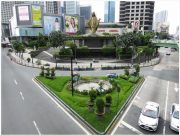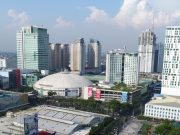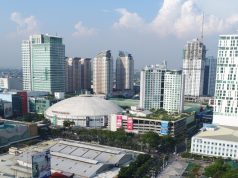The world of work has undergone significant changes in recent years, mainly due to the impact of the COVID-19 pandemic. One of the most notable shifts is the emergence of the hybrid working setup.
What is a Hybrid Working Setup?
The hybrid working setup is a flexible work arrangement that combines traditional in-office work with remote or work-from-home meetings. This model allows employees to split their time between working in a physical office and working from a location of their choice, such as their home, a co-working space, or even a café. The hybrid model aims to balance the structure and social interaction of office-based work with the flexibility and autonomy of remote work. It’s a model that offers the best of both worlds, providing benefits for employers and employees.
Brief Overview of the Philippine Real Estate Market
The Philippine real estate market has been a dynamic and evolving sector, showing resilience despite various economic challenges. Over the years, it has witnessed significant growth fueled by solid demand in residential and commercial segments. Key players, including Ayala Land, SM Prime Holdings, and Megaworld Corporation, dominate the market’s landscape.
However, like the rest of the world, the Philippine real estate sector has been dramatically affected by the COVID-19 pandemic. The health crisis led to a temporary halt in operations, causing a slowdown in property transactions and construction activities. Despite these challenges, the sector has shown adaptability and is now navigating the changes with new work arrangements, particularly the hybrid work setup.
In this article, we will delve into the impact of the hybrid working setup on the Philippines’ real estate market. We’ll explore how this shift in work culture is reshaping the sector, affecting corporate real estate strategies, and influencing future trends in the industry.
I. The Evolution of Work Arrangements and Its Impact on Real Estate
A. The Transition from Traditional to Remote Work
The dawn of the digital age brought a significant shift in work arrangements. Traditional in-house operations gradually gave way to remote work, allowing employees to carry out their tasks outside the confines of an office. Technological advancements, such as high-speed internet connections, collaboration tools, and cloud computing, made this possible.
Remote work has been proven to offer numerous benefits, such as increased productivity, cost savings, and improved work-life balance. However, this transition also affected the real estate market worldwide. As more companies adopted remote work, the demand for commercial office spaces declined. On the other hand, there was a surge in demand for home offices, leading to an increase in residential property sales and rentals.
B. The Emergence of Hybrid Work Setup
As the world began to adapt to the “new normal” brought about by the COVID-19 pandemic, a new work arrangement emerged — the hybrid work setup. This model combines the best of both worlds, offering the flexibility of remote work and the structure of traditional office-based work.
The hybrid work setup has been gaining popularity for its ability to cater to diverse employee needs and preferences. It provides employees with the option to work from a location that suits their productivity best, whether it’s at home, in a co-working space, or in the office.
C. Impact of these Changes on the Global Real Estate Market
These shifts in work arrangements have significantly impacted the global real estate market. With the rise of remote and hybrid work setups, the demand for commercial office spaces has decreased. Companies are now rethinking their real estate strategies, downsizing their physical offices, or converting them into flexible workspaces.
Meanwhile, the residential property market is experiencing a boom. As people spend more time at home, they are investing in larger living spaces or properties with dedicated home offices. There’s also a growing trend of people moving out of city centers to suburbs or rural areas where they can get more space for less.
As we continue to navigate the changes brought about by these new work arrangements, it’s clear that the real estate market must adapt. The future of real estate lies in its ability to accommodate these shifts and provide flexible solutions that cater to the evolving needs of businesses and individuals.
II. The Hybrid Work Model in the Philippines
A. Adoption and Acceptance of Hybrid Work in the Philippines
The Philippines, like many other countries, has embraced the shift to hybrid work setups. Companies across various sectors have adapted their operations in response to the changing work environment. In a survey conducted by Sprout, it was found that 64% of companies in the Philippines have adopted work-from-home arrangements. Additionally, PWC’s study revealed that 83% of employers lean towards hybrid work setups.
B. Benefits of Hybrid Work Setup to Filipino Employees
The hybrid work model offers numerous benefits to Filipino employees. Top among these is the increased freedom to choose when, where, and how to work. This flexibility allows for a better work-life balance, as employees can manage their time more effectively. Furthermore, the hybrid model can lead to improved productivity as employees can work in environments where they feel most comfortable and productive.
C. The Role of Hybrid Work in the Pandemic Response
Adopting the hybrid work model played a significant role in the pandemic response in the Philippines. It allowed companies to continue operations while ensuring the safety and well-being of their employees. In the face of lockdowns and social distancing measures, hybrid work setups enabled businesses to maintain productivity, reduce operational costs, and adapt to the new normal.
The hybrid work model has proven to be more than a temporary solution to the pandemic. It’s a transformative approach to reshaping the work landscape in the Philippines, with lasting implications for various sectors, including real estate.
III. The Impact of Hybrid Work on the Philippine Office Sector
A. Changes in Office Space Requirements
The rise of the hybrid work model has led to notable changes in office space requirements in the Philippines. According to JLL Philippines, hybrid and flexible work arrangements are expected to impact office leasing activity. As companies adapt to hybrid work, the demand for large, traditional office spaces is decreasing. Instead, businesses are seeking smaller, more versatile spaces that can accommodate a rotating workforce. This shift has led to an increase in demand for flexible office solutions, such as shared offices and co-working spaces.
B. Shifts in Location Preferences
The hybrid work model has also influenced location preferences. With less need for employees to be physically present in the office, businesses are no longer confined to city centers. As a result, there has been a trend towards decentralization, with companies considering locations outside the traditional business districts. This shift not only allows businesses to reduce costs but also provides employees with more choices regarding their work environment.
C. The Future of Co-working Spaces in the Hybrid Era
Co-working spaces are poised to play a significant role in the hybrid era. These spaces offer flexible terms and various facilities, making them ideal for hybrid workers. Moreover, co-working spaces can help mitigate some of the challenges associated with hybrid work, such as isolation and lack of collaboration. As such, they are expected to see continued growth in the future.
As we navigate the era of hybrid work, the office sector in the Philippines is undergoing significant transformation. It’s clear that flexibility, adaptability, and innovation will be vital to thriving in this new landscape.
IV. The Influence of Hybrid Work on Real Estate Sustainability Strategies
A. The Interplay of Hybrid Work and Sustainability
The rise of hybrid work has had a profound impact on sustainability strategies in the real estate sector. With fewer people commuting daily, there’s been a significant reduction in transport-related carbon emissions. Moreover, the decreased demand for large office spaces means less energy consumption for heating, cooling, and lighting large premises. These changes have pushed companies to reevaluate their sustainability strategies, focusing more on energy-efficient buildings and green technology.
B. Sustainable Practices in the Hybrid Work Era
In the era of hybrid work, adopting sustainable practices is more critical than ever. Companies are now investing in green buildings using renewable energy sources, efficient waste management systems, and eco-friendly materials. Furthermore, firms are exploring digital solutions to reduce paper waste and promote efficient energy use.
On an individual level, employees working remotely can contribute to sustainability efforts by reducing energy consumption at home, choosing eco-friendly home office furniture, and minimizing waste.
C. Case Study: How Firms are Adapting their Real Estate Strategies
Several firms are leading the way in adapting their real estate strategies in line with hybrid work and sustainability. For instance, Google’s parent company, Alphabet, announced plans to invest $7 billion in office space and data centers across the U.S., focusing on sustainability. They aim to incorporate features like solar panels, green roofs, and materials made from recycled products.
Similarly, Microsoft is reshaping its real estate portfolio to accommodate hybrid work while committing to carbon-negative by 2030. This involves investing in renewable energy, retrofitting existing buildings to be more energy-efficient, and utilizing technology to reduce their carbon footprint.
These cases demonstrate how companies are innovatively intertwining hybrid work models with sustainability strategies in their real estate decisions, setting a precedent for other firms worldwide.
V. The Effect of Hybrid Work on Corporate Real Estate Strategies
A. The Need for Flexibility in Corporate Real Estate
The shift to hybrid work necessitates a new level of flexibility in corporate real estate strategies. Traditional models based on square-foot-per-employee calculations no longer apply in this new landscape. Instead, corporations need to consider factors like the frequency of in-office days and the varying needs of their employees. This entails designing flexible spaces that adapt to changing requirements and investing in properties that allow for easy modification and reconfiguration.
B. Innovative Real Estate Strategies for a Hybrid Workforce
In response to the hybrid work phenomenon, companies are devising innovative real estate strategies. Some are rethinking their office layouts to provide a seamless experience for employees moving between home and office. Others focus on creating spaces that promote focus, foster well-being, and empower autonomy. Additionally, many companies are exploring shared office spaces or co-working arrangements to cater to their hybrid workforce.
C. Ways Companies are Redefining their Corporate Real Estate Policies
Companies are actively redefining their real estate policies to accommodate the shift to hybrid work. This involves not only re-evaluating their physical office spaces but also considering the impact of their decisions on employee productivity, company culture, and operational costs. For instance, some companies are reducing their office footprint and investing their savings into enhancing digital infrastructure to support remote work.
In conclusion, the rise of hybrid work is reshaping corporate real estate strategies. As the trend continues to evolve, companies must remain agile and responsive, ready to adapt their real estate policies to meet the changing needs of their workforce.
VI. The Future of Philippine Real Estate in the Hybrid Work Age
A. Predictions for the Post-Pandemic Real Estate Market
The post-pandemic real estate market in the Philippines is expected to see several changes. According to numerous forecasts, home prices, which saw a meteoric rise during the pandemic, are beginning to slowly decline. This is due to factors such as high demand, low supply, and record-low mortgage rates. Furthermore, industry experts predict that the growth and profits property investors and managers enjoy post-pandemic will normalize.
B. Opportunities and Challenges for the Real Estate Sector
The shift to hybrid work presents opportunities and challenges for the real estate sector. On one hand, there’s a growing demand for flexible office spaces and residential properties near coastal areas. On the other hand, there’s less demand for traditional office spaces and hotspot areas. In addition, the trend toward decentralization could lead to lower budgets and higher prices.
C. How the Real Estate Industry Can Adapt to the Hybrid Work Trend
To adapt to the hybrid work trend, the real estate industry needs to be flexible and innovative. This could involve rethinking office layouts, investing in digital infrastructure, and focusing on sustainability. Additionally, the industry may need to cater to the changing preferences of home buyers, who are now more interested in safety, security, and the ability to work from home comfortably.
In conclusion, the hybrid work age is reshaping the future of the Philippine real estate market. By staying agile and responsive to these changes, the industry can seize new opportunities and navigate potential challenges.
VII. Conclusion
A. Summary of Key Points
The hybrid work model has had a profound impact on global real estate strategies, affecting sustainability efforts, corporate policies, and local markets such as the Philippines. Reduced commuting and less demand for large office spaces have led to increased interest in sustainable buildings and green technology. Corporations have had to adapt by investing in flexible spaces that can accommodate the changing needs of their workforce. The Philippine real estate market has also been affected, with declining home prices and a shift in buyer preferences towards safety, security, and comfortable remote work environments.
B. Final Thoughts on the Impact of Hybrid Work on the Philippine Real Estate
The impact of hybrid work on the Philippine real estate market is significant and transformative. As the trend towards flexible working arrangements continues to evolve, the industry must stay agile and responsive. By embracing change and innovating, the real estate industry can not only navigate the challenges presented by this new era but also seize the opportunities it brings. This includes catering to the changing needs and preferences of home buyers and companies and focusing on sustainability and digital infrastructure. In doing so, the Philippine real estate industry can thrive in the age of hybrid work.

























